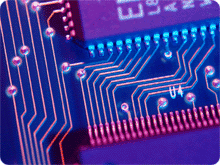 |
|
Cabling is the basic building block for most local area networks
(LANs). Cabling challenges arise as these networks reach 100
Mbps and beyond, especially for unshielded twisted pair (UTP)
networks. Standards are rapidly evolving, and performance
demands on cable and connecting hardware far exceeds those
of only a few years ago.
Companies spend thousands of dollars upgrading their network
equipment but the cabling often gets little if any attention.
This is ironic, because if the cabling doesn't work, the network
doesn't work. Some estimates are that cabling issues account
for up to 50% of all LAN failures. This results in network
downtime which translates to millions of dollars in lost productivity,
idle resources, and lost revenues. If you are a network administrator,
it is essential to understand how to get the best performance
from your cabling investment and find faults quickly when
they occur.
If you are a cable installer, you need to be up to date on
the latest cable installation and conformance techniques to
ensure that your work meets changing international standards.
It can be difficult to keep track of this rapidly changing
area of technology. In 1999 alone, there were new Category
5 cabling standards for supporting Gigabit Ethernet, new Category
5e standards, a new IEEE Gigabit Ethernet standard, important
amendments to international cabling standards, new fiber optic
standards, and significant progress towards new Category 6
and 7 standards. Many of these new standards required new
measurements, higher bandwidth, and higher dynamic range in
field measurements. None of the old Level II field testers
would be able to support this new level of performance. To
accurately make measurements in these new areas would require
advanced field testing technology.
Installing and maintaining a reliable physical cable plant
is essential to the well being of today's mission-critical
LANs. This involves two main areas. Most commonly, field testing
is done for certification of new cable plants, to ensure they
are capable of meeting cable and application standards. Also,
field testing is done in the event of adds, moves, or changes,
or in the case of troubleshooting to isolate a point of failure.
Fortunately, success with high performance premise cabling
is not difficult once its capabilities and characteristics
are understood. This website is intended to help you navigate
through the clutter of standards, cable classification systems,
measurement technology, and applications information so that
you can increase your productivity, stay current, and deliver
better value to your organization.
|

